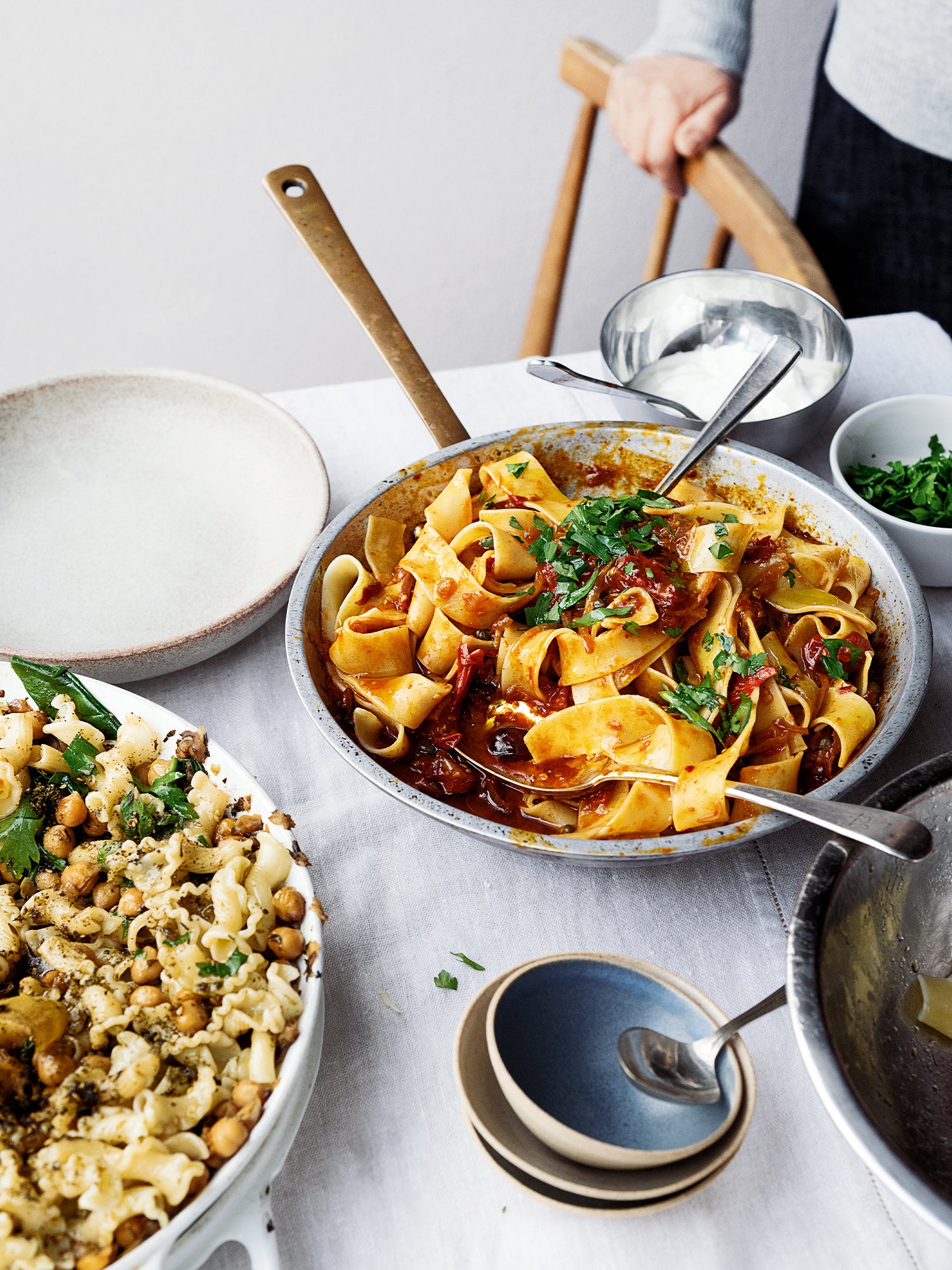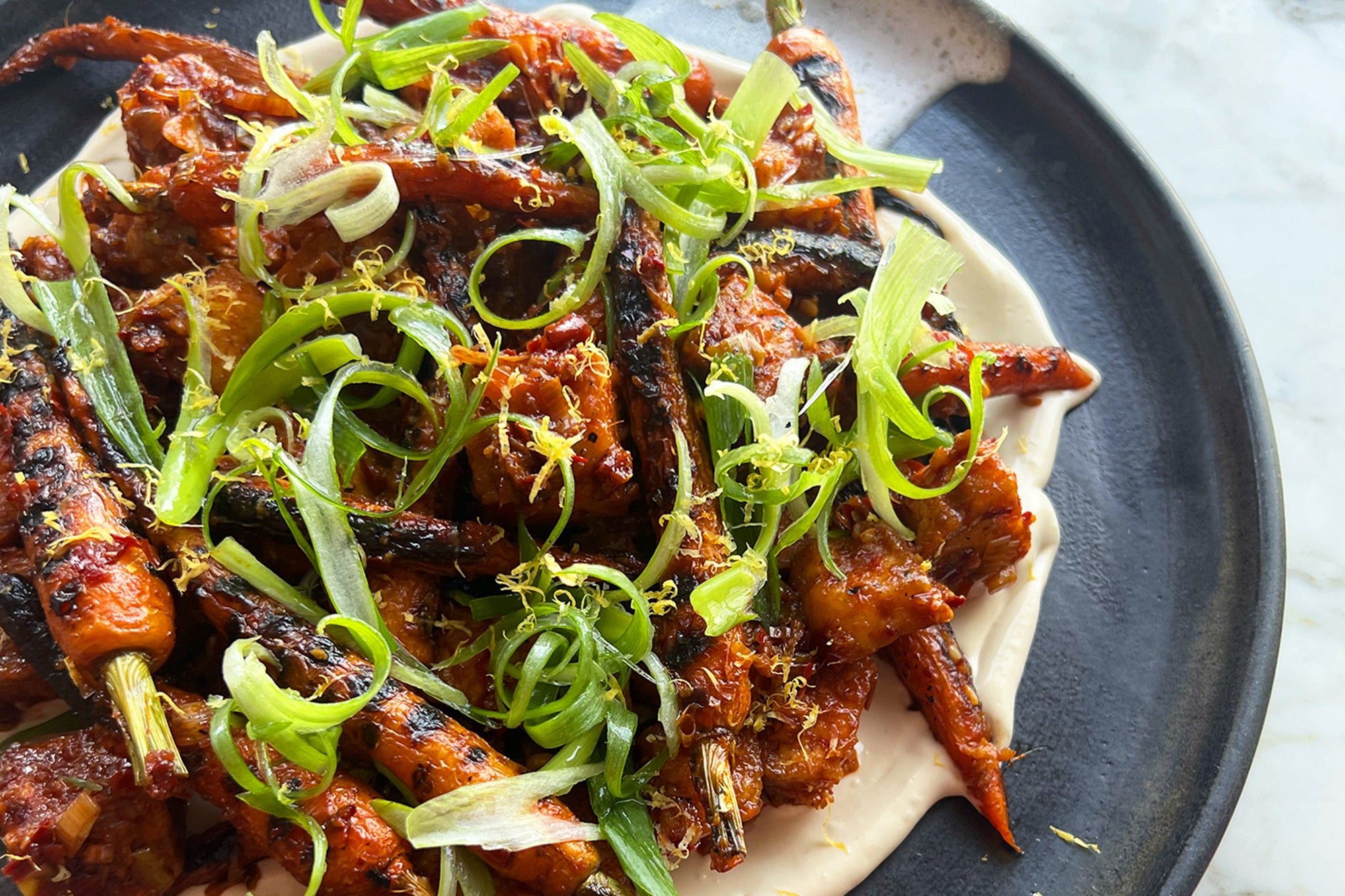Popular searches
Main menu
recipes menu
recipes
locations menu
locations
shop menu
shop
search
Popular searches
A North African condiment made from chillies, salt and olive oil.
Everyone’s got their personal preference. If you’re wanting something more tangy, go for our Green Harissa. And for something more floral, our Pomegranate and Rose Harissa.
Once opened, refrigerate and consume within 4 weeks. But if we have the time, we love to make it. Especially if using it as an all-purpose condiment. Pop a big dollop of olive oil on the top of your fresh jar of harissa and it'll keep in the fridge for 2-3 weeks.

Pappardelle with rose harissa, black olive and capers

Grilled carrots and tofu with harissa

Pomegranate and lemon harissa sticky sausages
This condiment is the cornerstone of many Tunisian, Israeli, Moroccan, Libyan and Algerian dishes. Since chillies arrived in North Africa in the 16th century, harissa has been the region’s chief method of preserving them.
Its bare bones are dried chilli peppers that are rehydrated and then blended with olive oil and spices. Sometimes it’s smoky from roasted fresh chillies; sometimes sharp and tangy; sometimes it’s loose and saucy; other times it’s thick and paste-like.
Use it in any way you’d use chilli paste, fresh chillies, or hot sauce.
Sometimes, simple dipping is the way to get the most out of your condiments. So go for it. Maybe loosen with labneh or olive oil.
As good as harissa may be with lamb and chicken, its ability to bring intense heat to firm, hearty veg is unparalleled. Like carrots or turnips. Roast or grill and finish with touches of acid (lemon) or dairy (a dollop of yoghurt). And, of course, fresh herbs.
Harissa has all the components of a good marinade — salt, acid spices and fat to transfer to fat-soluble flavours.
“Chef, how do you like to use harissa?”
Chaya and Michal like harissa in its purest form: on cheese-y, buttery toast. Milli opted for something a bit more complex: our Pomegranate, Rose and Preserved Lemon Harissa tossed with prawns or octopus.